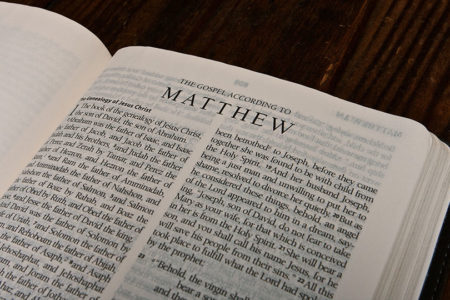Jesus in the Rabbinical Literature
It is easy to determine the Jewish opinion of Jesus during His earthly ministry by reading the Gospel accounts. In simple terms, the common people, even if they did not accept His Messianic claims, generally were positive toward Him and His teaching. This can be seen from such statements as “the common people heard him gladly” (Mk. 12:37) and “many of the people believed on him” (Jn. 7:31).
On the other hand, with some notable exceptions such as Nicodemus and Joseph of Arimathea, the religious leadership—the Pharisees and Sadducees—rejected Him in strong terms. This is illustrated in John 7:46–48: “The officers answered, Never man spoke like this man. Then answered them the Pharisees, Are ye also deceived? Have any of the rulers or of the Pharisees believed on him?”
The book of Acts and early church history reveal that there were many Jewish believers in Christ in the centuries following the death and resurrection of Jesus. The official Jewish religious leadership, however, continued to reject Him as the Messiah of Israel.
What did the rabbis think of this Nazarene who had offered them a kingdom that was not of this world? What memories of Him and His ministry remained with them, and how did they transmit those memories to their students? This article summarizes the portrait of Jesus that emerges from the rabbinical literature of the first few centuries following the climactic events of 30 A.D.
The Talmud
The main source for discovering the beliefs of Jewish people in the early centuries of the Common Era (sometimes abbreviated CE) is the Talmud. The Talmud is actually a library consisting of 63 individual works or tractates. This enormous collection of literature covers subjects as diverse as biblical law, medicine, agriculture, and philosophy. It is the physical embodiment of what is called the “oral law”—a compilation of the traditions regarding Jewish practices that developed over centuries and was handed down orally from generation to generation. The Talmud consists of two main parts: the Mishnah (written in Hebrew around AD 200) and the Gemarah (written in Aramaic around AD 400 in Palestine and around AD 500 in Babylonia). The Gemarah is commentary to the text of the earlier Mishnah.
Mastery of this enormous collection of literature, sometimes referred to as the “sea of the Talmud,” requires a lifetime of diligent study. Various attempts have been made over the years to summarize Talmudic teachings into more accessible topics, since the style and reasoning of the rabbis quoted in its pages can be difficult to comprehend. The most helpful work on references to Jesus in the Talmud is Christianity in Talmud and Midrash by R. Travers Herford, printed in 1903. Another helpful study by a Hebrew-Christian author is The Jewish People and Jesus Christ by Jacob Jocz, first published in 1949. Collecting various brief comments about Jesus scattered over the Talmudic tractates, these authors have summarized what the rabbis said about Jesus. The following is that summary. The references in brackets list the names of the Talmudic tractates and the section numbers where the statements about Jesus are found. The specific quotations can be found in the only complete English translation, the Soncino Talmud, published by Soncino Press in Great Britain.
The actual name of Jesus occurs only occasionally in the rabbinical literature, usually in the form “Yeshu” or “Yeshu ha-notsri” (the Nazarene). Sometimes he is referred to as “Yeshu ben Pantera” or “ben Stada,” but most often simply as “a certain man” or “that man.” Jesus was born out of wedlock [Mishna Yebamoth 4, 13] to his mother, Miriam, and her lover, Pantera [Shabbat 104b]. She is said to have been the descendant of princes and rulers, and to have played the harlot with a carpenter [Sanhedrin 106a]. Jesus spent time in Egypt, from where he learned magic. He was a magician who deceived and led Israel astray. He mocked at the words of the wise, was tainted with heresy, and was thus excommunicated [Sanhedrin 107b]. He called himself God, also the Son of Man, and said that he would go up to heaven [Jerusalem Taanit 65a]. He was “near to the kingdom” and had five disciples [Sanhedrin 43a]. He was tried in Lydda [Lod] as a deceiver and as a teacher of apostasy [Tosephta Sanhedrin X, 11; Jerusalem Sanhedrin 25c, d]. He was executed in Lydda, on the eve of Passover, which was also the eve of Sabbath, by being stoned and hung, or crucified [Tosephta Sanhedrin IX, 7]. For forty days a herald proclaimed that he was to be stoned, and invited evidence in his favor, but none was given [Sanhedrin 43a]. He (under the name of Balaam) was put to death by Pinchas the Robber [Pontius Pilate?] when he was thirty-three years old [Sanhedrin 106b]. He was punished in Gehenna by means of boiling filth [Gittin 56b, 57a]. Finally, under the name of Balaam, he is one of those excluded from the world to come [Mishnah Sanhedrin X,2].
A cursory reading of these assertions about Jesus by the rabbis makes certain conclusions clear. First, there is nothing in these statements that implies knowledge of the Gospels on the part of the rabbis. The differences in the Gospel accounts of Jesus and these assertions are so vast as to be absurd. It is evident that these ideas derive from some oral traditions among the rabbis and not from any actual facts. It should be remembered that these oral traditions were not recorded until at least two centuries after the “facts” they purport to record.
Second, it is patently obvious that the rabbis deliberately attempted to contradict events recorded in the Gospels. Compounding this distortion is an effort to present Jesus in as unfavorable light as possible. This was prompted either by Christian mistreatment of the Jews or simply as a device to prevent Jewish people from considering Jesus a viable option. Whatever their motive, there is no reason to place any confidence in these outrageous descriptions of Jesus and His deeds.
Furthermore, there is no indication that the modern scholarly efforts to understand Jesus—Jewish or Gentile—place any confidence in these statements as historical fact. Most Jewish people today never read the Talmud and are not usually prejudiced by these statements in forming their own ideas about Jesus. The people who are influenced by these erroneous comments are those who live in the protective cocoon of the yeshiva world. These are young men who study nothing but the Talmud, have never been exposed to the real Jesus, and would never think of reading the New Testament accounts of His life. It is sad that there are people whose only knowledge about the Lord Jesus comes from such erroneous comments as those cited. This is the reason we should bring out the truth.
The Toledot Yeshu
In addition to the sparse Talmudic references to Jesus, there is an old Jewish source that offers a more elaborate and rather fantastic account of His life. This text has been the object of much discussion since the Middle Ages. Scholarly studies of the Toledot Yeshu (the History of Jesus) trace its origin to the fifth century AD. This strange parody of the life of Jesus shares some features with the traditional Talmudic references but is more elaborate and less restrained in its comments. Rather than just the scattered comments in the Talmud, the Toledot Yeshu purports to replace the Gospel story with its own account of what really happened from the birth of Jesus to the events following His death. Furthermore, its intention is also to replace the Acts of the Apostles, specifically mentioning Peter and Paul (in an unfavorable light). It also recounts some of the events of Nazarene church history during the first few centuries after the book of Acts. The following is a brief summary of what the Toledot Yeshu records about Jesus.
Mary, who had been betrothed to a man named John, was seduced by her neighbor, Joseph ben Pantera. When she discovered she was pregnant, John left her for Babylon. When Jesus was born, she tried to pretend he was the son of John and even attempted to give him a Jewish religious education. Jesus, however, began to reveal the evil that would later mark him and was extremely rude to his rabbi master. The rabbi eventually uncovered the truth about Jesus’ father, but declared that Mary was not worthy of death because she committed the act unwillingly. Jesus, about thirty years old and now declared a bastard, fled to Jerusalem. There he secretly “stole” the letters of the Divine Name which had been written on the Foundation Stone of the Holy of Holies in the Temple—by sewing them under his skin! With the power of the Divine Name he began to heal the sick and eventually gathered 310 young men as his followers. He also performed such “tricks” as enabling a millstone to float on the Sea of Galilee and causing clay birds to fly as well as himself on occasion. At one point he was chained to an ark in Tiberias, but his followers, called “insurgents,” rescued him and he fled to Antioch.
Eventually “Yeshu” arrived in Jerusalem on the eve of Passover, riding on a donkey. There he was arrested and examined by the “wise men.” During this time he claimed to be the Son of God and the Messiah and cited many of the traditional Messianic prophecies as being fulfilled in the events of his life. Condemned as a blasphemer by the “wise men” (the Romans are not mentioned), he was put to death by hanging on a tree and was buried by the time of the evening prayer. On the third day, his “insurgents” declared to Helena (queen at the time) that they could not find him in the tomb. At that point, the gardener revealed that he had removed the body and cast it in a nearby pool; whereupon the “wise men” recovered the corpse, tied cords around his ankles, and dragged him through the streets of Jerusalem.
In its Hebrew and Yiddish versions, the Toledot Yeshu has had a wide circulation and influence, particularly in Eastern European Jewish communities. It has served as a popular handbook and is almost the only source left to the Jewish people from which to draw knowledge concerning Jesus Christ. Jacob Jocz, writing from his own personal experience prior to his coming to faith in Jesus, stated, “It used to be read with great relish, especially on Christmas Eve, and even now [the 1940s] Jewish schoolboys in countries like Poland are given the evening free to enjoy the story on the night of Natal [Nativity]” (pp. 63–64).
The scanty Talmudic references and the derisive account offered by the Toledot Yeshu were the two main sources upon which Jewish people drew information concerning Jesus of Nazareth—His life, labors, teaching, and the end of His physical life. Although differing on some details, they both ascribed to Jesus a shameful birth and death and accused Him of magic and sorcery. The purpose of these fantastic statements was to repel the Jewish readers from the person of Jesus and to keep them immune from any Christian influence. Undoubtedly, the effort, as dishonest as it was, was successful in many instances.
Today, honest Jewish scholars recognize the prejudicial and inaccurate nature of these accounts. The Orthodox camp of Judaism, however, isolated from reasonable scholarship and afraid to even read the New Testament, largely persists in believing the distorted picture of Jesus presented in these documents. This situation presents a great challenge to all of us who are concerned for Israel’s salvation. Somehow, in some way, we need to get the true message of the Messiah to those who have hidden for years behind false information about the one who could bring satisfaction to their thirsty souls—if only they would listen to His true words.








First, there is nothing in these statements that implies knowledge of the Gospels on the part of the rabbis.
Second, it is patently obvious that the rabbis deliberately attempted to contradict events recorded in the Gospels.
There is shooting yourself in the foot, and there is this sort of thing.